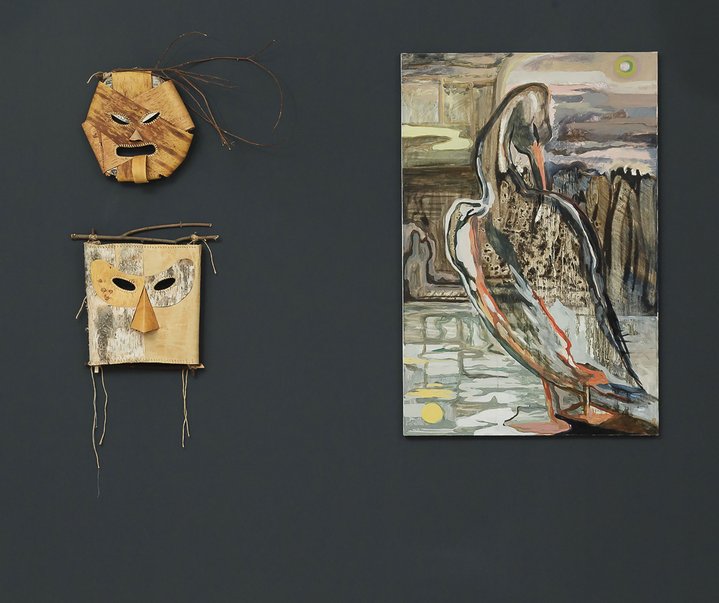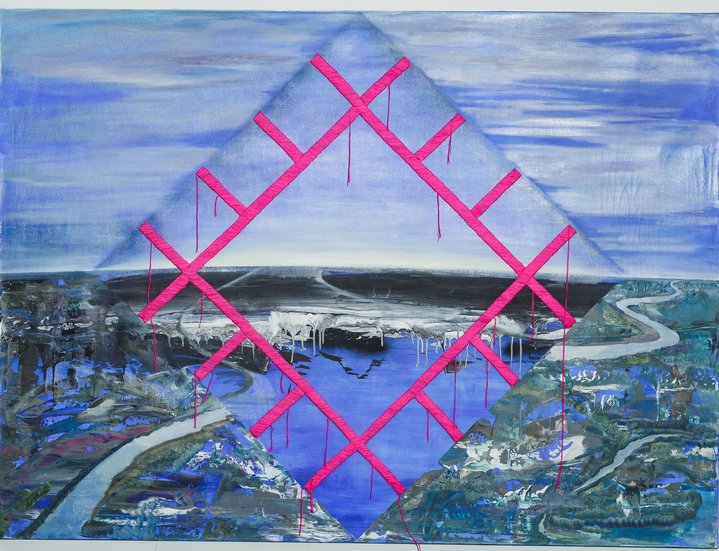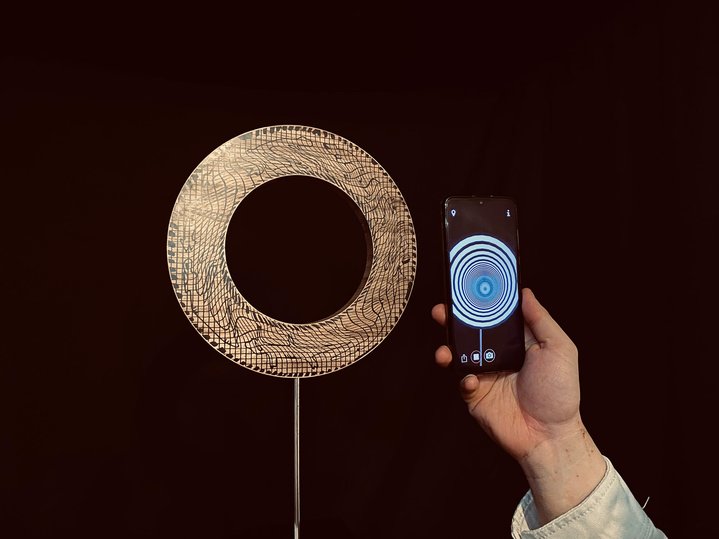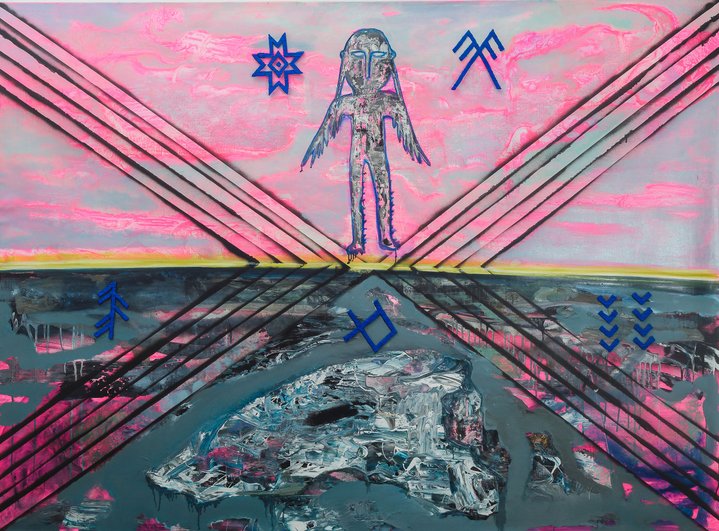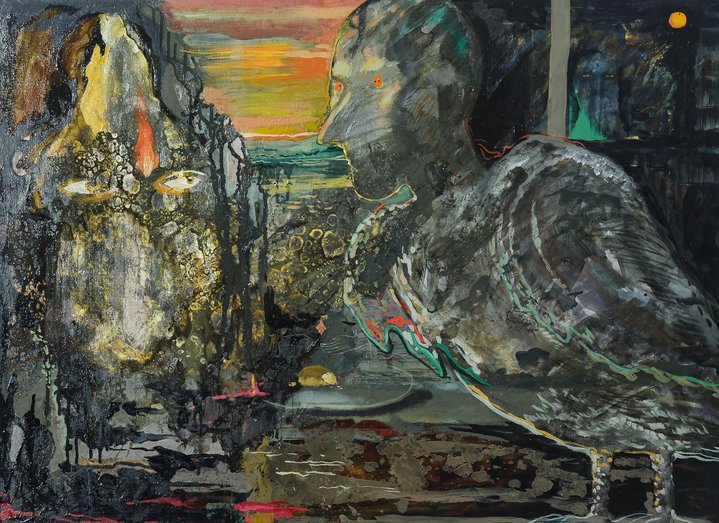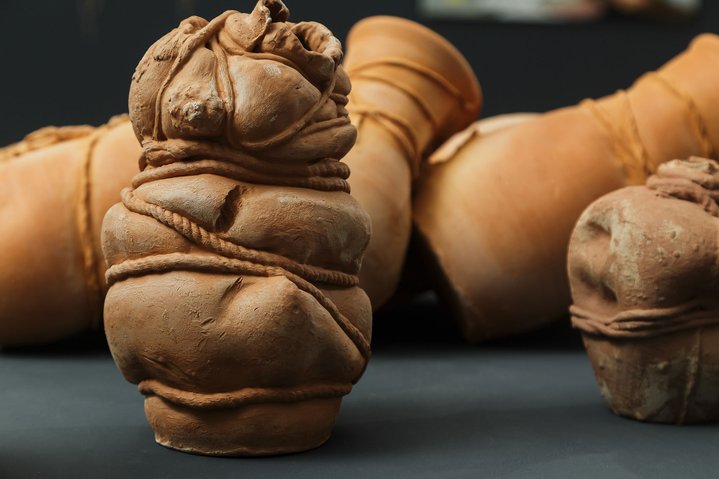Ivan Gorshkov. Photo documentation of the project ‘The Inta meteorite’, 2021. Photographer Andrey Karateev
Russia’s northernmost art biennale
The Komi Biennale, recently launched by Pierre-Christian Brochet, an ambitious French lover of Russian art, seeks to reveal the secrets of this remote and exotic region of the country, with the help of a bunch of Muscovite and international artists flown in especially for the occasion
Was it the painted spinning wheels and chests of Upper Vychegda and a journey through the Zyryan villages in 1889 that inspired Wassily Kandinsky (1866–1944) to turn from the legal sciences to painting and invent abstractionism? This hypothesis which has become a local myth, is not backed up by any evidence in Kandinsky’s own diaries about his trip to the land of the Komi. There is an anecdotal apocryphal that, instead of drawing inspiration from local painting traditions, Kandinsky was more impressed by the vivid hallucinations caused by ancient homemade mushroom Zyryan tinctures.
Certainly, the inaugural Komi Biennial of Contemporary Art, which opened on the 3rd of September at the National Gallery of the Komi Republic, takes myths about the Russian North and tries to debunk them, opening our eyes instead to the cultural riches of the largest region of Europe, whose visual art, despite its geographical accessibility (less than two hours by plane from Moscow), is still unknown, either in the Russian capital or around the world.
The first Commissioner of the biennial, (an event somewhat ambitiously titled ‘New Discovery of the North’ in the year of the centenary of the Komi Republic), is also the new president of the National Gallery of the Komi Republic: Pierre-Christian Brochet. A prominent book publisher, art collector, founder of the Russian club of contemporary art collectors, art lover and, above all, a tireless traveler, Brochet has for many years been discovering the hidden treasures in the Russian regions, uncovering local rituals, traditions and crafts and he has broadcast all these experiences on television and his own YouTube channel called ‘Pierre in Russia’.
Brochet encourages me to think about his concept for this new and very modestly sized biennale whose main project comprises only eleven Russian artists as if it were a show of soloists from the Bolshoi Theatre or a football team from a top club who landed in Komi to interpret the local culture. However, all the participating artists in the exhibition are already well-known in Russia and comparison with a tour could perhaps turn against the project as a colonial approach and a view of the local culture from the perspective of an outsider.
During the summer, all of the artists, some of whom are related through kinship and familial ties with the Russian North, went on personal research trips around the region, exploring the culture of the North Russian Old Believers in the Ust-Tsilemsky region (in the works of Ustina Yakovleva (b. 1987) and Alexandra Sukhareva (b. 1983) who will represent Russia at the next Venice biennale); the sad legacy of the GULAG system in Vorkuta (in the animism-inspired embroideries of Rodion Kitaev (b. 1984), documentary photographs by Timofey Parchikov (b. 1983) and an impressive total installation by Igor Samolet (b. 1984) interacting with museum objects); the traditional way of life of reindeer herders in the Izhma district; the National Park in Inta; the myths and legends of the Zyryans in the Ugorsky district; the sacred Mansi place of the endless Munpupuner plateau and the birthplace of the first Russian oil of Ukhta and the pristine nature of the republic, turning for advice to ethnographers, archaeologists and ritualists of the ancient peoples of the Mansi, Nenets, Komi.
Three special projects of the biennale were also built on close dialogues with the local nature and traditions of the region: the ‘Pavilion-Society’ of French research group La Mediterranee is literally grounded in Komi soil - when creating works, the artists used the pigment, clay, wood, wax and oil they found there. Seven artists of the ‘Collaboration’ project, organized by the MaxArt Foundation, created art works together with the craftsmen of Komi folk art, like Annouchka Brochet (b. 1967) who collaborated with a local weaver to make traditional Komi belts, which she turned into tools for shibari-ceramics. ‘Trap / On the Animal Style’, another special project by three artists organized by the Sphere Foundation, was inspired by the fishing of local hunters.
At the entrance to the gallery, visitors are greeted by an installation created by Voronezh-based artist Ivan Gorshkov (b. 1986) ‘Inta Meteorite’, an almost shapeless inflatable doll-sculpture, mounted not on a pedestal, but on a sled and made up of pictures and images found on the Internet referring to digital reality. Gorshkov rode with this sculpture through the Yugyd Va National Park and visitors can see not only the artifact, but pictures and a video from the open spaces of the natural reserve documenting the travels of this bizarre alien object across the republic. According to Gorshkov’s original idea, a visual meteorite was supposed to cause the effect of a simple dissonance between the object and the environment, but everything turned out to be much more interesting. Due to its lack of realism, the object began to raise doubts in the landscape itself, as if turning everything into a computer game, creating a diversion reacting against the idea of the primordial essence of nature: can it be devoid or cleared of human influence and the garbage produced by humans, whether visual and intangible, informational, or digital?
The biennale itself does appear to sabotage the local cultural environment, but it instead manages to embrace it in a nuanced and respectful way. Despite the boutique scale, you leave the show with the sense that it is precisely this kind of intimate format which is what we most need in the post-pandemic world, which has devalued mega-projects and the relentless race for Gargantuan scale.
1st Komi Biennale
National Gallery of the Komi Republic
Syktyvkar, Komi Republik, Russia
September 3 – October 10, 2021






